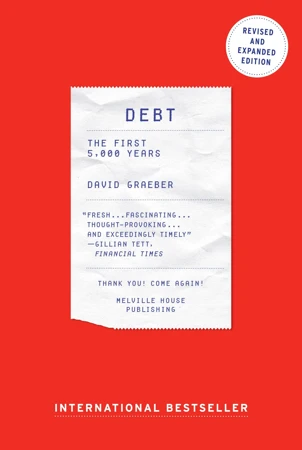Debt – The First 5,000 Years

Blurb
Here anthropologist David Graeber presents a stunning reversal of conventional wisdom: he shows that before there was money, there was debt. For more than 5,000 years, since the beginnings of the first agrarian empires, humans have used elaborate credit systems to buy and sell goods—that is, long before the invention of coins or cash. It is in this era, Graeber argues, that we also first encounter a society divided into debtors and creditors. Graeber shows that arguments about debt and debt forgiveness have been at the center of political debates from Italy to China, as well as sparking innumerable insurrections. He also brilliantly demonstrates that the language of the ancient works of law and religion (words like “guilt,” “sin,” and “redemption”) derive in large part from ancient debates about debt, and shape even our most basic ideas of right and wrong. We are still fighting these battles today without knowing it.Comment from our editors:
This is a fundamentally crucial book. David Graeber introduces different concepts such as money and debt. He takes a historical and anthropological way of explaining the origin. This breaks with the mainstream explanation, which is used in many Economics textbooks, saying that a barter economy existed before money arose.
There are some serious deficiencies in the economics curriculum in terms of what money is and how debt and money developed. By teaching that money was developed because pure barter in a more complex economy wasn't practical anymore, Mainstream economics has been using a misleading narrative and assumption for a long time. This had implications in the way credit, debt & money were modeled in macroeconomics models. Graeber claims that debt and credit historically appeared before money and barter. This has some serious implications for how currencies and markets developed and which role the state plays in this.
Also, have a look at this lecture by David Graeber to get a brief introduction to the book.

